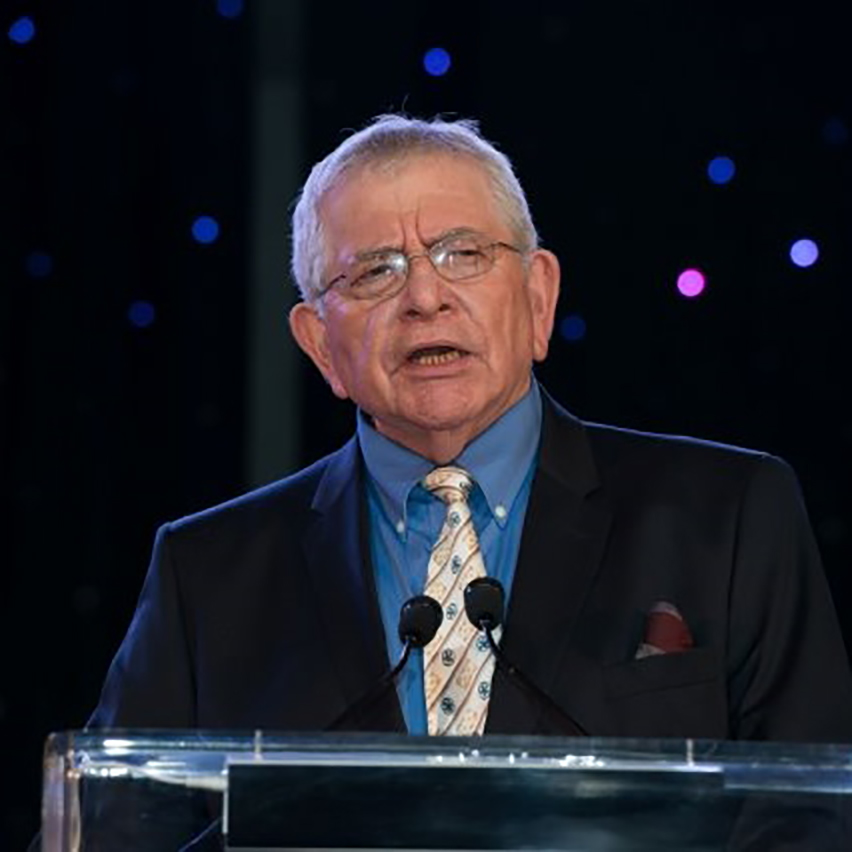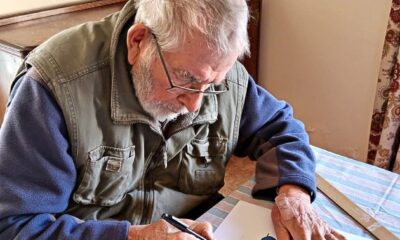
Lifestyle

Dov Fedler’s Gagman makes its deadline
When acclaimed veteran South African cartoonist Dov Fedler celebrated his 82nd birthday recently, he received a gift of the first copy of a book he had spent 35 years working on.
Titled Gagman, the book isn’t full of political and satirical cartoons as one would expect from Fedler, but a Holocaust story with a difference.
The book was conceived in 1985 when, said Fedler, “the story just jumped into my head” and he sat down and “wrote it in a flash”. The story is about a comedian in a concentration camp who survives by entertaining the commandant. “He would give his soul for a new joke,” said Fedler. “He knew that the moment he was no longer entertaining, he would die.”
Fedler said it took him until 1995 to understand where his idea had come from. “I was living on deadlines and every single day, I had to produce a cartoon and it had to be funny. If you break down the word deadline, you have dead and line. So, the story was a metaphor for myself times a thousand. It was me telling history and my story in a way.”
He revealed this recently in a video conversation with his daughter, Joanne, an accomplished author in her own right, and Lewis Levin, a family friend and the architect of the Johannesburg Holocaust & Genocide Museum.
“I felt like I grew up with Gagman,” Joanne said. “I remember my dad talking about him when I was a teenager and early adult. I remember writing a poem about him when my dad was 54, and now I’m 54.”
The project went on for many years and took on many iterations. “It wasn’t just the writing of the book but the many illustrations that took time, and it got to a point where it felt like the project was never going to come to fruition,” said Joanne.
Fedler battled to tell a story about someone who had lived through the camps, which wasn’t his own experience. However, the Holocaust certainly played a role in his life.
Fedler was born in 1939, just months before World War II began. “My mother was already getting news of her sister and her family who were in a camp. They perished there,” he said. His mother didn’t have the strength to deal with him as she was emotionally drained and depressed, so his sister brought him up. His mother died when he was 14. Three years later, Fedler’s father married a survivor from Dachau who had lost her husband and child. Fedler couldn’t relate to his stepmother at all.
But in spite of the fact that Fedler knew it had a place in his life, Gagman was a long process, and was almost shelved permanently.
Levin, a lifelong friend of Joanne, was the catalyst for getting it back on track.
He knew about the project from when he and Joanne were young adults and it was discussed at the Fedler home. He has a deep interest and involvement in Holocaust education.
“Two years ago, Lewis and I had a conversation in which he said we needed to help Dov finish Gagman because we didn’t want the book to die and never get into the world,” Joanne said.
Levin said he understood it was a difficult subject for Fedler to write about, one which included exploring family and collective Jewish trauma.
“For Dov, he was bringing to fullness his own Jewish experience, his autobiography, and journey into this creative process,” said Levin. “But because it’s so enormous and the subject is so uncomfortable for us Jews to manage, it was too big to present and be done with.”
So, he paid Fedler a visit and asked what had happened to all his books, texts, and drawings for Gagman, and Fedler responded that it was “hiding somewhere in boxes”.
Levin encouraged Fedler to get it out of the boxes and show his unique work – which combines graphics with words – to the world.
Joanne then came on board. “My role was to shepherd, curate, and help take a 35-year-old project and pull it together, to help make narrative decisions and cull things in order to find the essence of the story,” she said.
“This was the first time I had ever written a story,” Fedler said. “Then I had to impose my ego on that so the cartoons came out. Then, I learnt about writing from my mentor, my daughter Joanne, that the characters need to be heard.” So, only 47 of the illustrations remained in the novel.
But Levin points out that unlike other novels, the illustrations in this book are the backbone, not the other way around. “The image of Goebbels and Gagman behind the fences – those images were the back story, and you [Fedler] explored the mind and the narrative of the comic character,” Levin said. “And even though there are few illustrations, they haunt you throughout the reading of the novel because they are ultimately about this cartoonist who remakes himself in this new world and lives in a way as a cartoonist because he invents jokes, puns, he draws through letters in a very Jewish way because Jews draw images through words,” said Levin. “You bring the fullness of the Jewish tradition to paint these images in our minds – which contributes to the richness of reading your book.”
“In the book, we have this incredible tension with these comedic shpiels, these shticks that the comedian is doing based on what he’s seeing in front of him,” said Joanne. “It’s a literal dead line. Because the minute he’s no longer funny is the minute he could lose his life.”
Joanne felt a kind of “intergenerational responsibility” or calling to work with her father to complete this novel.
It was also something that Fedler believes was urged by the Rebbe himself. When Fedler was given the opportunity to meet the Rebbe in 1979, he told him to “finish your book” and even when Fedler thought he may have mistaken him for his father, the Rebbe was very clear who he was referring to.
It was six years after that meeting that Gagman popped into Fedler’s head.
Levin said he saw Gagman as “a kind of midrash [interpretation of a text] on Jewish history’s traumatic events”. He believes that it could deliver to students the chance of gathering around a table to interpret the Holocaust, raising uncomfortable and controversial issues.
“Consider Dov’s first statement that he’s a ‘collaborator’. It’s an uncomfortable notion for Jews to know that Jews took this role and participated in their own destruction. How does Dov’s idea of a collaborator affect our understanding of our role in the world?” Levin asks.
Said Joanne, “One of the main questions this book leaves you with is: ‘What would you do? Can you laugh at jokes about the Holocaust, and can you laugh at the Gagman’s jokes?’”






